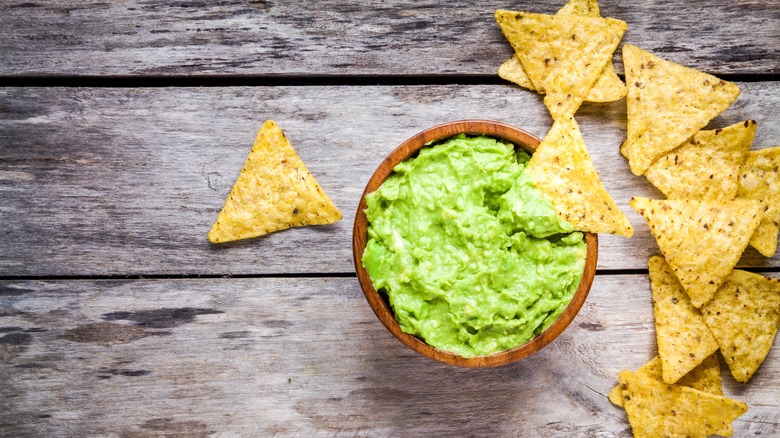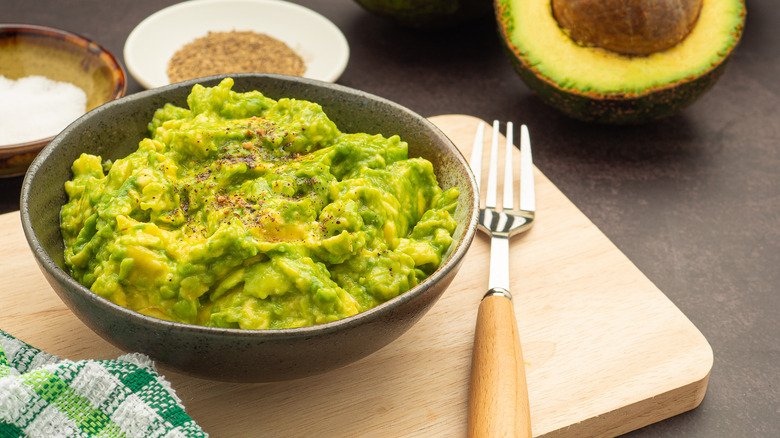Read This Before Eating Brown Guacamole
Besides depending on the avocado as its main ingredient, guacamole has another thing in common with the fruit from which it is made: Both seem fresh and bright green at first, but look away for a second and they turn an unappetizing brown color. While this hue that both avocados and guacamole quickly take on may make it seem like they have gone bad, that is not actually the case.
According to Food Network, if the guacamole has been stored in a refrigerator for no more than three days, the dip — even if brown in color — is absolutely safe to eat. The site explains that the brown color comes from a process called oxidization. Much like an apple, when an avocado is sliced into, its enzymes react with oxygen in a way that the surface area exposed to it becomes brown. This is perhaps why you'll only ever see the top layer of the guacamole turn brown whereas the dip beneath it is usually still a vibrant green color.
While the hue certainly changes, oxidization affects neither the flavor of the food nor its nutritional value, which is why it's perfectly safe to eat. Nevertheless, there's no denying that the mucky color is not a particularly pleasant sight to dig into, and so, with the help of a few tricks, you can stop your guacamole from oxidizing and turning brown.
How to prevent guacamole from turning brown
Some, like food site Eat This, Not That!, suggest placing an avocado pit on top of homemade or store-bought guacamole to prevent it from turning brown. Others, however, argue that there are far better and more foolproof ways to do this. Pure Wow claims that using lemons and limes is the preferred way — the acidity will react with browning enzymes much before oxygen does to prevent the guacamole from browning. They suggest brushing the citrus juice over the guacamole before storing it.
A layer of olive oil, cooking spray, or water on top of the guacamole can also act as a barrier between the dip and oxygen. Tightly wrapping the dip in plastic wrap so that no oxygen gets trapped in between the two layers is another option. Real Simple cautions that citrus juices greatly change the taste of the dip, plastic seals are hard to wrap tight, and avocado pits are quite frankly useless in this situation. Instead, they found that a layer of water works best and leaves behind little to no discoloration without affecting the taste and texture of the creamy dip. Today also vouches for the water method and deems it the "most effective" of all to stop guacamole from oxidizing and changing its color.

